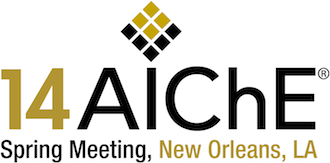

Acrolein (Acr) is a highly toxic, flammable and reactive chemical widely used in agriculture and oil field chemical formulations. This case study presents the results of thermodynamic modeling and offsite consequence analysis (OCA) including worst case scenario (WCS) and alternate release scenario (ARS), conducted for an Acrolein storage facility in New Iberia, Louisiana. Hazard analysis including hazard review and identification, and OCA is required by federal, state and local regulations for facilities storing greater than threshold amounts of regulated toxic or flammable substances. Applicable federal regulations include the Risk Management Program (RMP) under the Clean Air Act and the United States Occupational and Health Safety Administration’s (OSHA) Process Safety Management (PSM) Standard. The hazard analysis is useful for facility siting, accident prevention and emergency response planning even when stored quantities of hazardous materials are below regulatory thresholds for a particular facility. In this case study, the results of the modeling were used for two separate but related purposes:
- To make engineering and planning decisions about onsite emergency response and incident management.
- Generate estimates of potential release rates and expected durations of Acr emissions for use as input for air dispersion modeling to conduct the OCA.
The site was owned and operated by a chemical distributor to the oil & gas industry and was used for storage of full and partially empty Acr containers ranging in size from rail car containers to smaller day tanks. The Acr containers included a nitrogen blanket in each tank to prevent oxidation of the contents. The Acr containers were protected by a rupture disc and pressure relief valve combination.
In the first part of the analysis, hazard review and identification – hazards were identified based on several guidelines and criteria. These included United States Environmental Protection Agency (USEPA) and OSHA guidance, Acr material safety data sheets (MSDS), the safety literature concerning Acr, container and storage tank construction details, company operating procedures and hazard and operability studies (HAZOP). This analysis identified several scenarios likely to result in accidental Acr releases including the following WCS and several ARS:
- WCS - rupture of a single container to a contained liquid pool.
- Hose rupture during transfer ‐ liquid spill
- Vent line rupture during: a) container filling, b) tank purging ‐ vapor phase release
- External fire and pressure relief valve operation - vapor phase release
- Rapid polymerization and pressure relief valve operation ‐ vapor phase release
Then in the second step, thermodynamic modeling was conducted to estimate how an Acr release could occur, how much would be expected to be released, and at what rates and under what conditions? For the external fire scenario, an external pool fire model developed and used by the DOT in a tank car study is used as the heat input model. Methods for estimating bulk heating rates and time to reach bulk temperature are consistent with the DOT and API 520 guidance. For the fire and rapid polymerization models, calculated results included the following:
- The liquid temperature required to produce a vessel pressure sufficient to overcome the rupture disk burst pressure and cause the relief valve to open.
- The time required to reach this temperature from the start of fire exposure or self- polymerization.
- The estimated release amount and physical state – vapor or liquid.
- The vapor generation rate at the saturation temperature corresponding to the PRV set pressure compared to the PRV relief capacity.
Rapid polymerization was thought to be a relatively unlikely occurrence but was selected as the “design” case for facility planning as calculations showed that it is a conservative but plausible scenario.
In the final part of the analysis OCA was conducted for the WCS and the selected ARS “design scenario”. Air dispersion modeling was performed to estimate the impact of potential releases on surrounding properties and onsite and offsite receptors in the vicinity of the release: The WCS was analyzed using RMP Comp and the ARS was evaluated using ALOHA. The OCA was conducted based on the following conditions.
- Flammable solvent storage under shed and outside
- RMP for acrolein field tank storage in separate area to southwest – 0.5 ppm toxic endpoint
- Concrete berm, water deluge and monitoring around acrolein storage
- Commercial receptors next door
- Resident and daycare less than one mile
- Prevailing winds from north and south
The OCA mapped the spread of a plume from potential releases on aerial maps of the facility and surroundings, and identified receptors potentially affected by the release.
Facility process control and emergency response planning decisions made using release scenario modeling and OCA simulation results included the following:
- Identifying setback distance to maintain from flammable products
- Sizing concrete berm and sumps to contain spills
- Location of a water deluge system
- Perimeter monitoring and alarms
- Decision to deliver full containers rather than fill containers by hose
- Desired response time, perimeter air monitoring sensors and alarms, mitigation measures including a water deluge system and stocking of personal protective equipment for emergency response.
